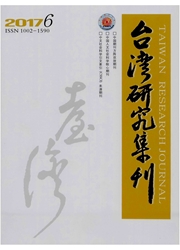

 中文摘要:
中文摘要:
“刘易斯第一拐点”的到来,意味着农业劳动力大量的缩减,要求农业发展进入农业技术替代劳动力投入的关键时期。本文在刘易斯理论基础上,构建农业总产出曲线模型计算得出闽台的“刘易斯第一拐点”大致在1992年和1966年。用DEA-Malmquist指数法计算并对比了“同一刘易斯拐点时期”之后的20年(福建:1992—2011年;台湾:1966—1985年)以及“同一历史时期”(1994—2013年)共20年闽台的农业生产效率。研究发现:“刘易斯第一拐点”后台湾两个时期农业全要素生产效率增长均主要依靠科技进步和科技利用效率,福建与台湾相比两时期科技利用效率均偏低,增长方式属于粗放型。借鉴台湾经验,本文提出了重视人力资本投资、强化农业科技创新、健全农业科技成果转化体系和创新闽台农业技术互动合作机制等4个方面的措施以提升福建农业科技和生产效率。
 英文摘要:
英文摘要:
The arrival of "the Lewis' first inflection point" means a massive reduction of agricultural labor force, which demands the agricultural development to enter a key stage of agricultural technology that replaces the labor force. Based on the Lewis' theory, this paper has worked out the inflection points of Fujian and Taiwan which came approximately in 1992 and 1966 respectively through the construction of agricultural total output curve model. Meanwhile, the paper makes a comparison of the agricultural total factor productivity between 20 years after "the same Lewis' inflection point" (Fujian: 1992-2011 while Tai- wan 1966-1985 ) and 20 years during "the same historical period" (1994-2013) by using Malmquist index. The findings show that the growth of Taiwan agricultural TFP in these two periods mainly relies on its technological progress and efficiency of technology. Compared with Taiwan, Fujian tends to have a low efficiency in the use of science and technology and belongs to the extensive growth mode. Drawing on the experience of Taiwan, the paper proposes four measures that should be taken to pro- mote Fujian agricultural science and technology and the production efficiency, which include the stress on the human capital in- vestment, the strengthening of the agricultural science and technology innovation, the improvement of the transformation system of agricultural science and technology achievements as well as the innovation of Fujian-Taiwan agricultural technological cooperation mechanism.
 同期刊论文项目
同期刊论文项目
 同项目期刊论文
同项目期刊论文
 期刊信息
期刊信息
